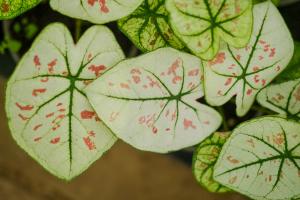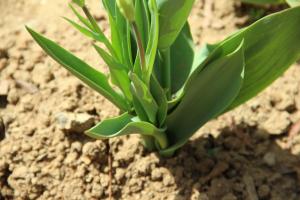Introduction
In the world of gardening, one of the most controversial topics is whether or not to plant tomatoes in the same spot every year. Some gardeners swear by this method, while others adamantly oppose it. In this article, we will explore the pros and cons of planting tomatoes in the same spot every year, and provide you with the information you need to make an informed decision for your own garden.
Pros of Planting Tomatoes in the Same Spot
One of the main advantages of planting tomatoes in the same spot every year is that it can be more efficient. If you have a spot that is well-suited for tomato growth, and you have a system in place for fertilizing and watering your plants, then you can save time and effort by continuing to use that spot. You won't have to spend time testing out new spots or adjusting your systems to fit different areas of your garden.
Another benefit of planting tomatoes in the same spot is that it can help to build up the soil in that area. Tomato plants are heavy feeders, and they can deplete the soil of nutrients quickly. By planting tomatoes in the same spot every year, you can add organic matter and nutrients back into the soil, which can help to improve the soil health and fertility over time.
Cons of Planting Tomatoes in the Same Spot
While there are some potential benefits to planting tomatoes in the same spot every year, there are also some downsides to consider. One of the main risks is that it can lead to the buildup of soil-borne diseases and pests. Tomato plants can be susceptible to a variety of diseases, including fusarium wilt, verticillium wilt, and bacterial canker. If these diseases are present in the soil, they can infect new tomato plants and lead to poor yields or even plant death.
Another potential downside of planting tomatoes in the same spot every year is that it can lead to a decrease in yield over time. When tomato plants are grown in the same spot repeatedly, they can experience a phenomenon called "soil fatigue." This occurs when the soil becomes depleted of certain nutrients that are essential for plant growth, and the plants start to produce fewer and smaller fruits.
Alternatives to Planting Tomatoes in the Same Spot
If you are concerned about the risks of planting tomatoes in the same spot every year, there are several alternative methods you can try. One option is to rotate your tomato plants to different spots in your garden each year. This can help to prevent the buildup of soil-borne diseases and pests, as well as reduce the risk of soil fatigue. Another option is to plant other crops in between your tomato plants, which can help to break up any disease or pest cycles that may be present in the soil.
You can also take steps to improve the soil health in your garden. Adding organic matter, such as compost or aged manure, can help to increase the nutrients in your soil and improve its overall health. You can also consider using cover crops in your garden, which can help to add nutrients, improve soil structure, and prevent erosion.
Conclusion
When it comes to planting tomatoes in the same spot every year, there are both pros and cons to consider. While it can be a more efficient and soil-building method, it can also lead to the buildup of soil-borne diseases and pests, as well as a decrease in yield over time. However, there are alternative methods you can try, such as crop rotation and soil improvement techniques, that can help to mitigate these risks. Ultimately, the decision of whether or not to plant tomatoes in the same spot every year will depend on your garden's unique circumstances and your own personal preferences as a gardener.

 how many times do yo...
how many times do yo... how many planted tre...
how many planted tre... how many pine trees ...
how many pine trees ... how many pecan trees...
how many pecan trees... how many plants comp...
how many plants comp... how many plants can ...
how many plants can ... how many plants and ...
how many plants and ... how many pepper plan...
how many pepper plan...






























